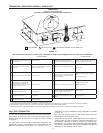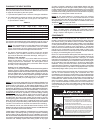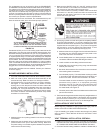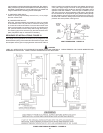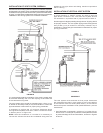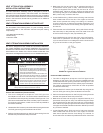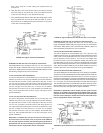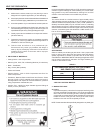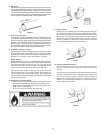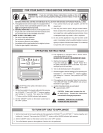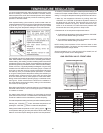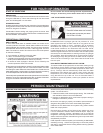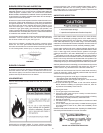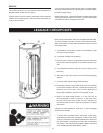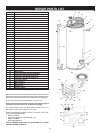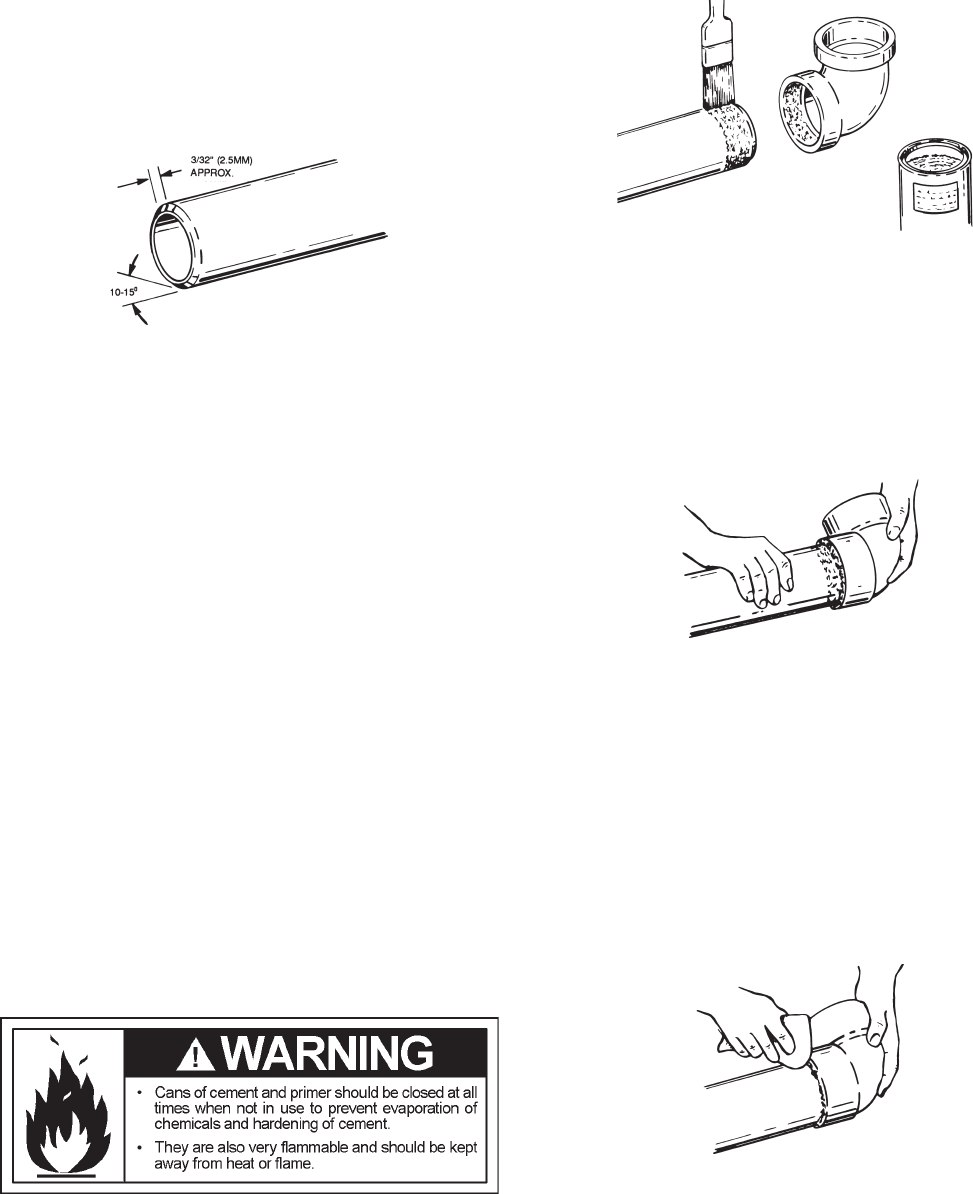
27
B. Deburring
Useaknife,plasticpipedeburringtool,orletoremoveburrsfromthe
end of small diameter pipe. Be sure to remove all burrs from around the
insideaswellastheoutsideofthepipe.Aslightchamfer(bevel)ofabout
10°-15°shouldbeaddedtotheendtopermiteasierinsertionofthepipe
intotheendofthetting.Failuretochamfertheedgeofthepipemay
removecementfromthettingsocket,causingthejointtoleak.
STEP B
C. Test dry t of the joint
Taperedttingsocketsaredesignedsothataninterfacedtshould
occur when the pipe is inserted about 1/3 to 2/3 of the way into the
socket.Occasionally,whenpipettingdimensionsareatthetolerance
extremes, it will be possible to fully insert dry pipe to the bottom of
thettingsocket.Whenthishappens,asufcientquantityofcement
mustbeappliedtothejointtollthegapbetweenthepipeandtting.
Thegapmustbelledtoobtainastrong,leak-freejoint.
D. Inspection, cleaning, priming
Visuallyinspecttheinsideofthepipeandttingsocketsandremove
all dirt, grease or moisture with a clean dry rag. If wiping fails to clean
the surfaces, a chemical cleaner must be used. Check for possible
damage such as splits or cracks and replace if necessary.
Depth-of-entry
Marking the depth of entry is a way to check if the pipe has reached
thebottomofthettingsocketinStepF.Measurethettingdepth
and mark this distance on the pipe O.D. You may want to add
several inches to the distance and make a second mark as the
primerandcementwillmostlikelydestroyyourrstone.
Applyprimertothesurfaceofthepipeandttingsocketwith
a natural bristle brush. This process softens and prepares the
PVC or CPVC for the solvent cementing step. Move quickly and
without hesitation to the cementing procedure while the surfaces
are still wet with primer.
E. Application of solvent cement
• Applysolventcementevenlyandquicklyaroundoutsideofpipe
atawidthalittlegreaterthanthedepthofthettingsocket.
• Applyalightcoatofcementevenlyaroundtheinsideofthe
ttingsocket.Avoidpuddling.
• Applyasecondcoatofcementtothepipeend.
STEP E
F. Joint assembly
Workingquickly,insertthepipeintothettingsocketbottomand
givethepipeorttinga1/4turntoevenlydistributethecement.
Do not continue to rotate the pipe after it has hit the bottom of the
ttingsocket.Agoodjointwillhavesufcientcementtomakea
beadallthewayaroundtheoutsideofthettinghub.Thetting
will have a tendency to slide back while the cement is still wet
so hold the joint together for about 15 seconds.
STEP F
G. Cleanup and joint movement
Remove all excess cement from around the pipe and fitting
with a dry cotton rag. This must be done while the cement is
still soft.
The joint should not be disturbed immediately after the cementing
procedure,andsufcienttimeshouldbeallowedforpropercuring
ofthejoint.Exactdryingtimeisdifculttopredictbecauseit
depends on variables such as temperature, humidity and cement
integrity.Formorespecicinformation,youshouldcontactyour
solvent cement manufacturer.
STEP G



